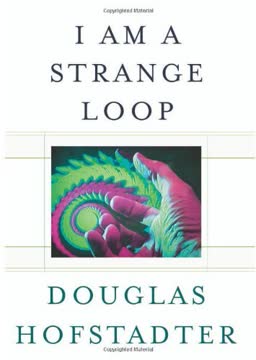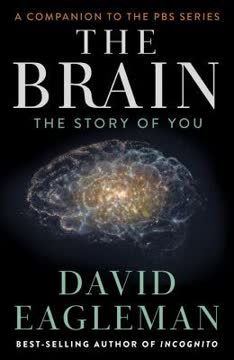Key Takeaways
1. Your Brain is Dynamic & Changes Throughout Life (Plasticity)
Experiences, thoughts, actions, and emotions actually change the structure of our brains.
Brain is plastic. Contrary to old beliefs, the brain is not hard-wired after childhood. It's a dynamic, plastic organ that continuously changes throughout life in response to everything we do, think, and feel. This plasticity allows for learning, adaptation, and even recovery from damage.
Neurons connect and compete. The brain is a vast network of neurons forming trillions of connections (synapses). These connections are constantly being modified – strengthened or weakened – based on use. This process, sometimes called "neural Darwinism," means neurons and circuits compete for survival; those that are used thrive, while unused ones wither ("Use it or lose it").
- Neurons that fire together wire together.
- Practice strengthens neural pathways.
- Learning recruits more neurons initially, then becomes automatic and shifts to lower brain areas.
Lifelong development. Development isn't just for kids. Adults can rewire their brains through practice and new experiences, as shown by studies of musicians, stroke victims, and even people learning new skills like approaching supermarket doors (like Temple Grandin). This means we have the power to actively shape our capabilities and well-being.
2. Genes Set Boundaries, But Experience & Choice Shape Who You Become
Genes set boundaries for human behavior, but within these boundaries there is immense room for variation determined by experience, personal choice, and even chance.
Nature and nurture interact. The old "nature versus nurture" debate is a false dichotomy. Who we are is a complex result of the continuous interaction between our genetic predispositions and our environment, experiences, and choices. Genes provide a blueprint, but they are not destiny.
Genes are influenced by environment. Genes are not isolated; they reside in every cell and their activity (whether they are turned on or off) is affected by environmental factors. Childhood stress, diet, exercise, and even social interactions can influence gene expression throughout life.
- A genetic predisposition doesn't guarantee a trait will manifest.
- Environment can mitigate or exaggerate genetic effects.
- Identical twins, despite identical genes, can have different outcomes based on their experiences.
Free will matters. Despite the influence of genes and environment, we are not simply passive recipients of fate. Our choices, actions, and goals actively direct the development of our brains. This means we have a degree of free will in shaping who we become, even if it's harder for some than others due to their biological or environmental starting points.
3. Perception is an Active, Reconstructive Process That Shapes Your Brain
The brain is shaped by the perceptions it experiences, so we may be able to get our brains into better shape by becoming aware of what and how we perceive.
Perception is not passive. We don't just passively receive information from our senses. The brain actively interprets, filters, and reconstructs sensory input based on past experiences, expectations, and internal states. This means what we "see" or "hear" is often a prediction or interpretation, not just raw data.
Brain fills in the gaps. Our sensory systems are limited (e.g., blind spots, fuzzy peripheral vision), but the brain creates a seamless, coherent reality by filling in missing information based on learned patterns. This predictive nature explains phenomena like optical illusions and why we recognize objects from unfamiliar angles.
- Visual information is processed in parallel pathways (shape, color, movement).
- The brain filters out "noise" to focus on relevant "signals."
- Sensory experiences are combined and interpreted based on memory and context.
Perception shapes the brain. The way we perceive the world directly influences the physical structure of our brains. Repeated perceptual experiences strengthen specific neural pathways. Problems with perception, even subtle ones, can cascade into significant difficulties in cognition, emotion, and social behavior, as seen in cases like Rickie's visual processing disorder.
4. Attention & Consciousness Emerge from Synchronized Brain Activity
It is only when the conductor can synchronize the brain’s neural networks that we become conscious.
Brain is always active. The brain isn't a passive machine waiting for input; neurons are constantly active and communicating. Attention is the process of focusing this activity, like a spotlight, on specific stimuli, while consciousness may be the state of synchronized activity across different brain regions.
Attention has components. Attention involves multiple processes:
- Arousal (general alertness, controlled by brainstem/limbic system).
- Orientation (directing senses to stimuli, involving parietal cortex/basal ganglia).
- Novelty detection & Reward (identifying new/important stimuli, involving limbic system/dopamine).
- Executive organization (planning, goal-directed focus, involving frontal lobe/anterior cingulate).
Consciousness as synchronization. One compelling theory suggests consciousness arises from the synchronized electrical activity (around 40 Hz) between the thalamus and cortex. The thalamus acts like a conductor, coordinating the activity of widespread neural networks. When this synchrony is disrupted (e.g., during sleep or unconsciousness), consciousness fades.
5. Movement is Fundamental to All Brain Functions, Including Thought
As we will see, our “higher” brain functions have evolved from movement and still depend on it.
Movement is core. Movement isn't just a "lower" brain function for physical action; it's fundamental to cognition, planning, memory, and even abstract thought. The brain regions involved in physical movement are also used for mental simulations and planning.
Thinking is action-based. Planning, deliberating, and deciding involve sequencing and organizing information, processes rooted in the brain's motor circuits (frontal cortex, basal ganglia, cerebellum). We "mentally walk around" ideas, using the same neural machinery as physical navigation.
- Executive function (frontal lobe) organizes both physical and mental actions.
- The cerebellum, known for coordinating movement, also helps coordinate thoughts and timing.
- Motor programs become automatic and shift to lower brain areas with practice, freeing up the cortex for new learning.
Body-mind connection. The distinction between mind and body is artificial. What the brain communicates depends on feedback from the body, and vice versa. Learning often involves physical action or mental rehearsal of movement, highlighting the deep link between motor activity and cognitive development.
6. Memory is Distributed, Reconstructive, and Constantly Reshaped
Because our daily experiences constantly alter these connections, a memory is a tiny bit different each time we remember it.
Memory is not stored in one place. Memories are not located in a single "storage bin." Instead, bits and pieces of a memory (sensory details, emotions, language, actions) are stored in distributed networks across the brain and are reconstructed each time they are recalled.
Memory is malleable. The act of recalling a memory is a reconstruction, influenced by current mood, context, and new experiences. This makes memory flexible and adaptive, but also fallible and susceptible to distortion or false implantation, as shown by Elizabeth Loftus's research.
- Long-term potentiation (LTP) is a cellular mechanism that strengthens synaptic connections, encoding memories.
- Repetition and emotional significance (amygdala tagging) enhance memory encoding.
- Sleep, particularly REM sleep, is important for memory consolidation.
Different types of memory. The brain handles different kinds of memory:
- Explicit (facts, events, conscious recall, involves hippocampus/temporal lobe).
- Implicit (skills, habits, unconscious recall, involves basal ganglia/cerebellum).
- Episodic (personal experiences, time-stamped).
- Semantic (factual knowledge, detached from personal experience).
7. Language is a Unique Human Tool for Thought, Planning, and Connection
Owing to language, we don’t have to act immediately on emotional impulses determined by our immediate surroundings.
Language enables delay. Language is more than communication; it's a fundamental tool for thought, planning, and self-control. Mapping thoughts to symbols allows us to detach from immediate stimuli, manipulate ideas mentally, weigh consequences, and delay action. This "off-line thinking" is crucial for complex problem-solving and moral reasoning.
Language is distributed. While traditionally linked to Broca's and Wernicke's areas, language functions are distributed across the brain and can vary in location between individuals. Specific areas may handle narrow tasks (like naming vegetables), but the overall function involves widespread networks.
- Speech production and comprehension are linked, possibly using "mirror neurons."
- Motor areas are involved in language, from vocalization to sequencing ideas.
- Emotional circuits contribute to understanding tone and metaphor.
Nature and nurture in language. Language acquisition has a strong biological basis ("universal grammar"), allowing children to learn complex rules effortlessly. However, environmental input is essential to trigger this capacity and learn a specific language. Critical periods exist for acquiring fluency.
- Early exposure to language significantly impacts brain development and later cognitive skills.
- Reading and writing are learned skills, not innate, relying on existing brain structures.
- Dyslexia can stem from difficulties processing fast sounds or visual information, often linked to specific brain differences.
8. Emotions are Physical & Mental, Guiding Decisions and Behavior
Emotion is messy, complicated, primitive, and undefined because it’s all over the place, intertwined with cognition and physiology.
Emotions involve body and brain. Emotions are not purely mental; they are complex states arising from the interaction of brain activity and physiological changes in the body. Our physical sensations contribute to how we experience feelings.
Emotions guide action. Emotions are powerful motivators, directing our attention and behavior. They provide a quick assessment of situations, often before conscious thought, influencing decisions from simple preferences to complex social judgments.
- Basic emotions (fear, anger, sadness, joy) are linked to specific brain areas and physiological responses.
- The amygdala is crucial for processing fear and assigning emotional significance to stimuli.
- The frontal lobes, especially the ventromedial cortex, integrate emotion with reasoning for decision-making.
Emotional regulation is key. Learning to manage emotions is vital for well-being and social success. Chronic negative emotional states (like anxiety or depression) can have detrimental effects on both mental and physical health, potentially altering brain chemistry and structure.
9. The Social Brain is a Complex Network Essential for Human Connection
Our highest human virtue is our connection with other humans, and social activity is basic to our health and happiness.
Humans are social animals. Social behavior is fundamental to human survival and well-being, deeply rooted in our evolutionary history. Our brains are preprogrammed for social interaction from birth.
Social skills are distributed. Effective social behavior requires the coordinated effort of many brain regions, from "lower" motor skills (like maintaining distance) to "higher" cognitive functions (like empathy and moral reasoning).
- The cerebellum helps coordinate social timing and attention shifts.
- The amygdala is involved in recognizing and responding to social cues, especially emotional ones.
- The frontal lobes (especially ventromedial and anterior cingulate) are crucial for social judgment, insight, and regulating behavior.
Social deficits have biological roots. Difficulties in social interaction, from mild awkwardness to severe disorders like autism or antisocial personality disorder, often have underlying biological differences in brain structure or function.
- Autism is linked to differences in the cerebellum, amygdala, and frontal lobes, affecting social attention and "theory of mind."
- Antisocial behavior may involve underactive frontal lobes and impaired emotional processing.
- "Social dyslexia" (right-hemisphere deficit) affects understanding nonverbal cues and context.
10. Understanding Your Brain's Biology is Key to Self-Awareness & Well-being
To know ourselves, we must become good self-observers, and it is for this reason, more than any other, that we must learn about the object that drives our logic, imagination, and passion.
Self-knowledge is power. Understanding the biological basis of our perceptions, thoughts, emotions, and behaviors is crucial for self-awareness. It allows us to see our strengths and weaknesses not as moral failings, but as aspects of our unique brain function.
Empowerment through understanding. Recognizing that challenges may stem from physical differences in the brain can alleviate shame and self-blame. This shift in perspective empowers individuals to become active participants in understanding and addressing their difficulties.
- Learning about brain plasticity highlights the potential for change and improvement.
- Understanding how genes and environment interact clarifies personal responsibility.
- Identifying specific perceptual or cognitive differences can lead to targeted strategies.
Beyond traditional labels. Moving beyond simplistic diagnostic labels and exploring the specific ways an individual's brain processes information offers a more accurate and empathetic path to healing. Self-observation, guided by knowledge of brain function, provides invaluable insight into subjective experience.
11. Mental Health Challenges Often Stem from Physical Brain Differences
Many aspects of the way we are, formerly blamed on the environment, on bad parenting, or on early childhood trauma, are now more correctly recognized as deficits in the brain.
Biological basis of psychopathology. A growing body of evidence shows that many conditions traditionally viewed as purely psychological or behavioral have significant biological underpinnings. Differences in brain structure, function, and chemistry contribute to a wide range of mental health challenges.
Beyond trauma. While trauma and environment play a role, they often interact with or exacerbate existing biological vulnerabilities. Focusing solely on psychological history or seeking a single "cure" (like one drug or one gene fix) overlooks the complex, distributed nature of brain function.
- Disorders like autism, dyslexia, OCD, ADHD, and depression are linked to specific brain differences.
- Subtle perceptual or cognitive deficits can cascade into significant emotional and behavioral problems.
- Understanding the physical basis of symptoms (e.g., anxiety as physiological hyperarousal) can guide more effective treatment.
Need for a new approach. The traditional focus on treating "affect" (emotional state) directly is often insufficient. A more effective approach investigates the underlying biological processes that give rise to those feelings and behaviors.
12. The Four Theaters Model: A Holistic Framework for Understanding Experience
By logically investigating each theater, clinicians—and people themselves—can find the fundamental cause of difficulties and design lasting cures.
A new paradigm. The "Four Theaters" model offers a framework for understanding human experience and psychopathology as a flow of information and influence through interconnected levels of brain function. It moves beyond simplistic, localized views of brain activity.
The Four Theaters:
- Perception: The gateway for receiving sensory and internal information. Problems here are upstream and can cascade.
- Attention, Consciousness, & Cognition: Processing and interpreting perceptions, forming conscious awareness and thought. Influenced by perception, affects brain functions.
- Brain Function: Core abilities like movement, memory, emotion, language, and social skills. Shaped by upstream theaters, influences downstream behavior.
- Identity & Behavior: The observable output, personality, and sense of self. The culmination of upstream processes, but also feeds back to influence them.
Interconnected system. The theaters are not isolated but form a dynamic river of the mind, with influences flowing both downstream (from perception to behavior) and upstream (from behavior/identity back to perception/processing). A problem in any theater affects the entire system.
Holistic diagnosis and treatment. This model encourages a holistic approach to diagnosis, starting upstream with perception and working down, involving the patient as a co-investigator. Understanding the biological roots in the early theaters can illuminate the psychological and behavioral outcomes in the later ones, leading to more accurate diagnoses and effective, less shaming treatments.
Last updated:
Review Summary
A User's Guide to the Brain is praised for its accessible explanation of neuroscience concepts, though some find it dense and repetitive. Readers appreciate Ratey's insights on brain plasticity, the connection between movement and cognition, and his cautious approach to psychiatric drugs. The book's structure and dated information are criticized, but many find it a fascinating introduction to brain science. Some reviewers note its potential to change perspectives on mental health and personal development. Overall, it's recommended for those interested in understanding brain function and its impact on behavior.
Similar Books










Download PDF
Download EPUB
.epub digital book format is ideal for reading ebooks on phones, tablets, and e-readers.





